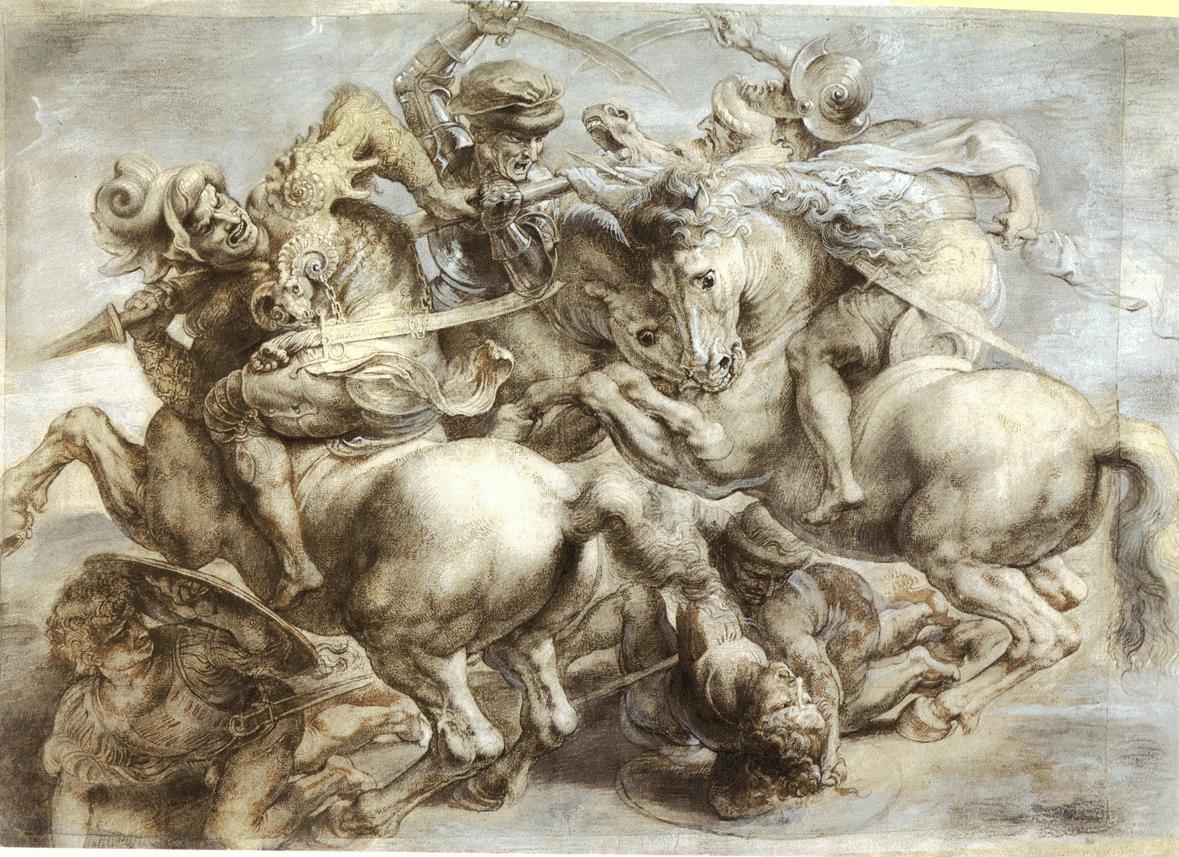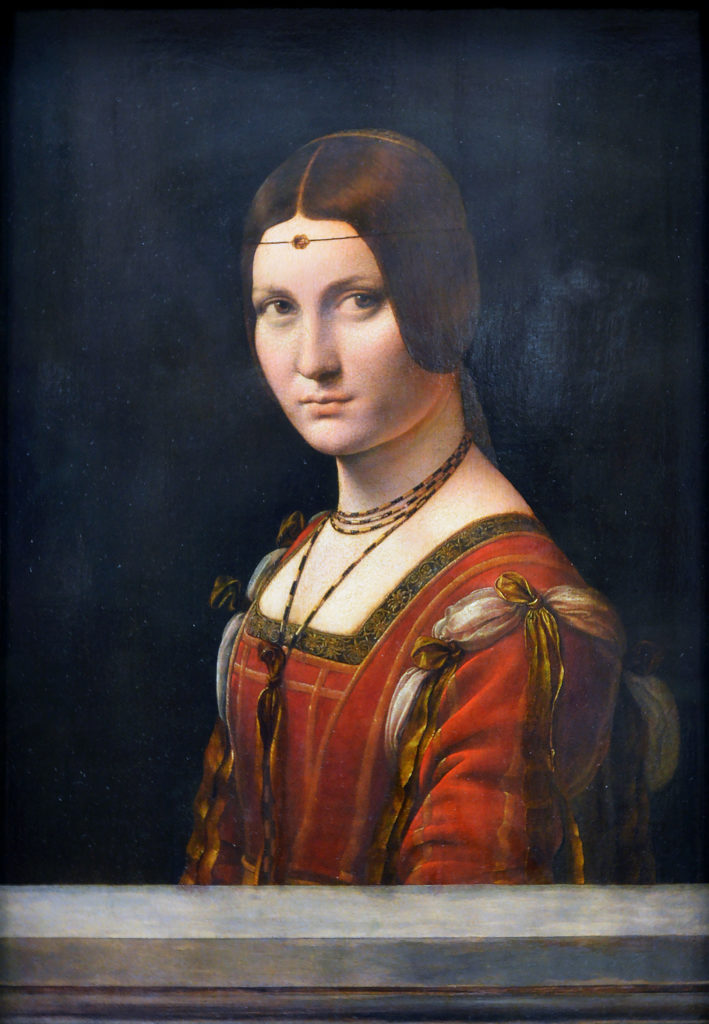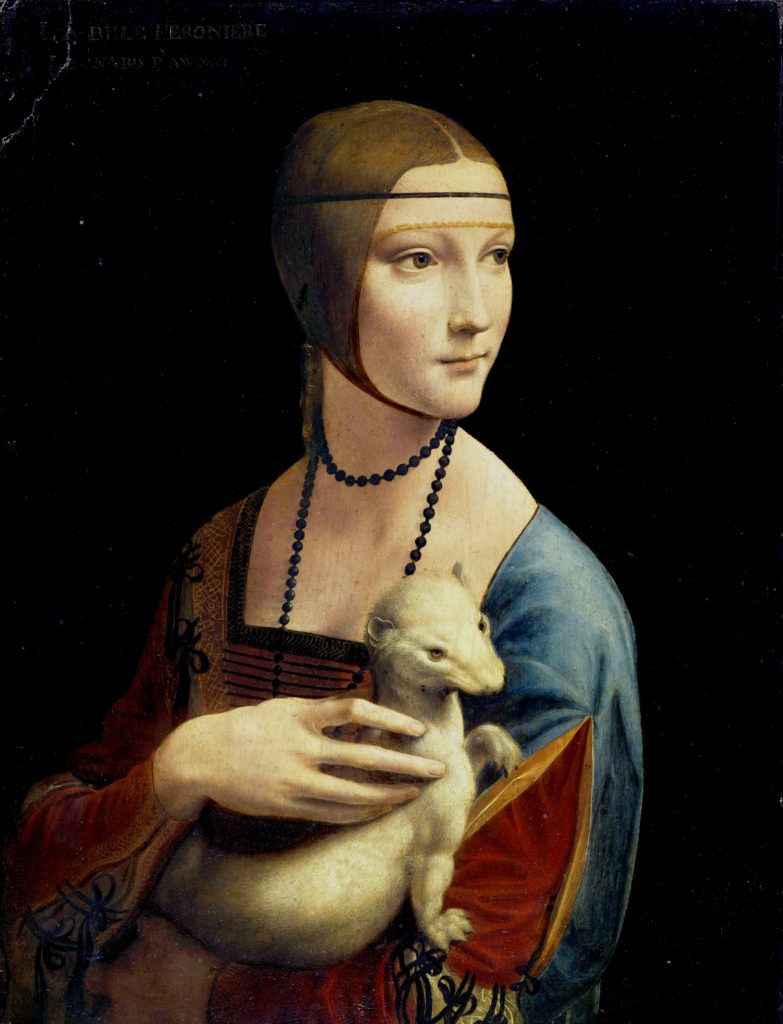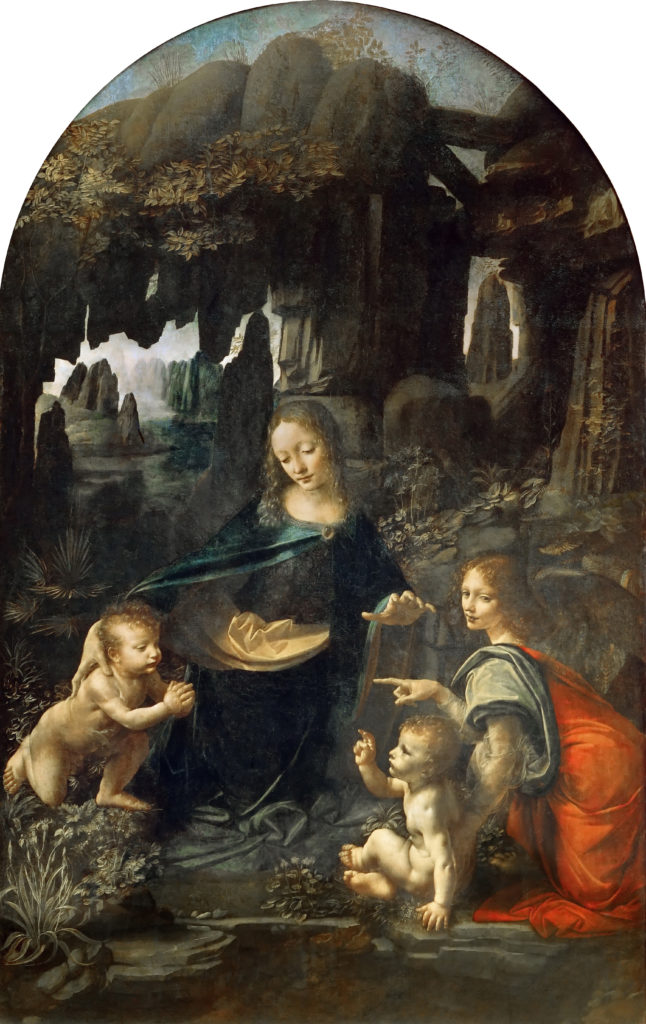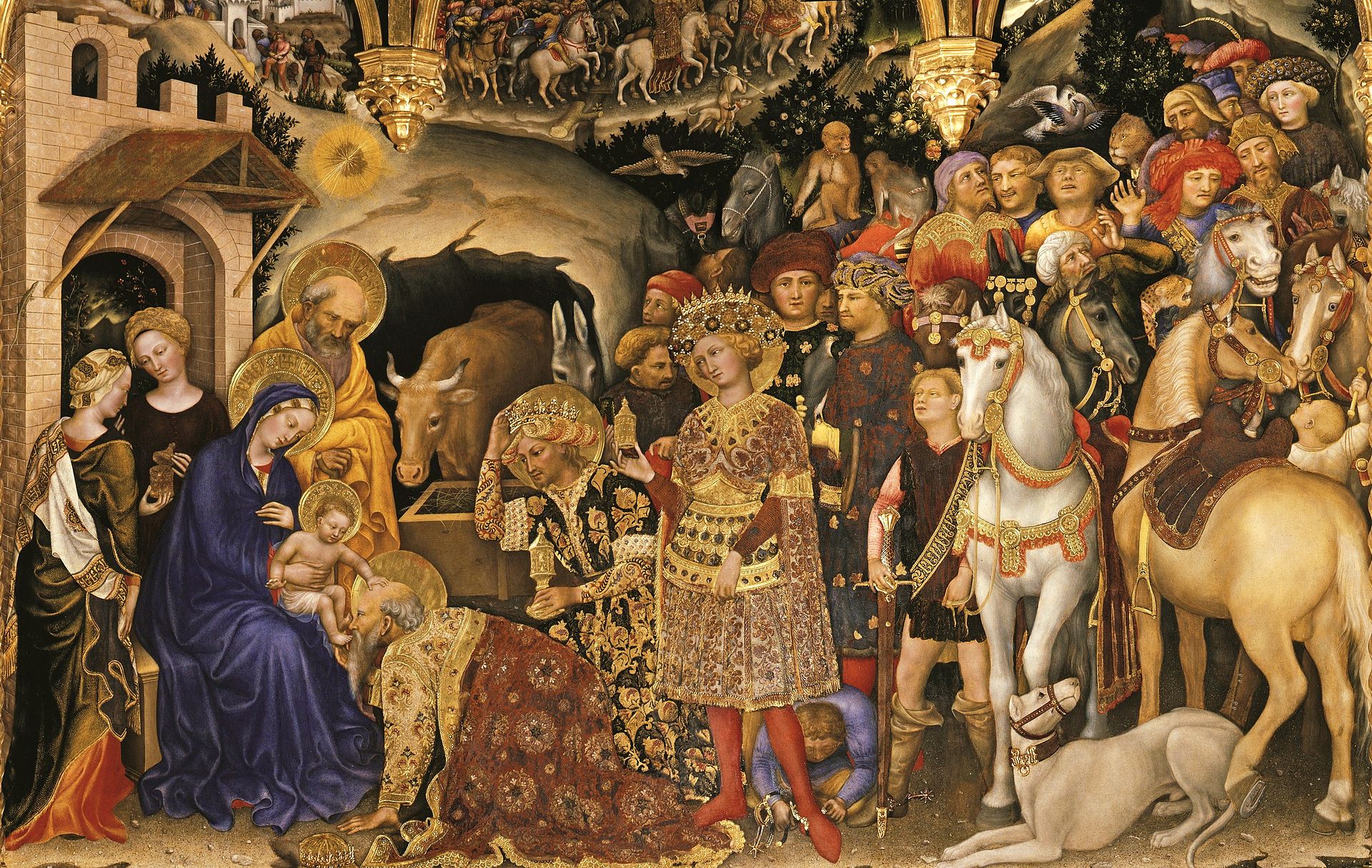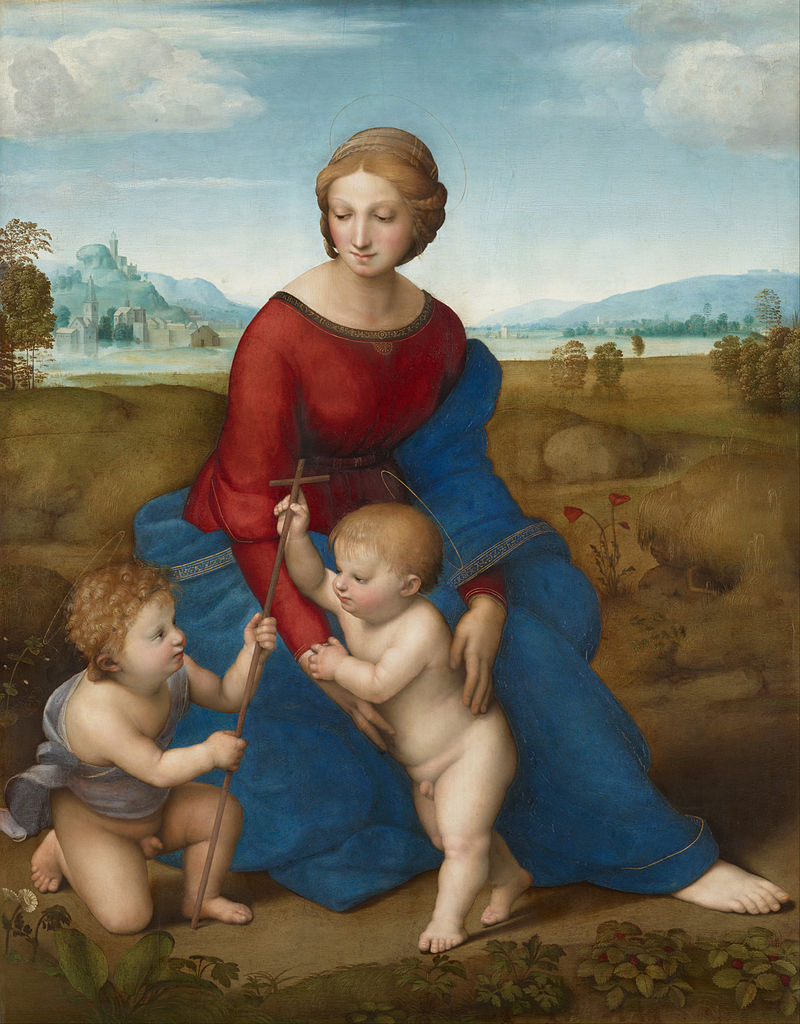
The Madonna del Prato (Madonna of the Meadow), formally Madonna with the Christ Child and Saint John the Baptist, is a 1506 painting by Raphael, now held in the Kunsthistorisches Museum in Vienna. It is also known as the Madonna del Belvedere after its long residence in the imperial collection in the Vienna Belvedere.
The figures of the Virgin Mary, the infant Jesus, and an infant John the Baptist are shown in a calm grassy meadow, linked by looks. Mary is wearing a gold-bordered blue mantle set against a red dress, extending her right leg along a diagonal. The blue symbolizes the church and the red Christ’s death, with the Madonna touching hands with Jesus the uniting of Mother Church with Christ’s sacrifice. Her eyes fixed on Christ, her head turned to the left and slightly inclined, and her hands steady him as he leans forward unsteadily to touch the miniature cross held by John. The poppy refers to Christ’s passion, death and resurrection.
Source: Raphael – Madonna in the Meadow – Google Art Project – Madonna del Prato (Raphael) – Wikipedia
